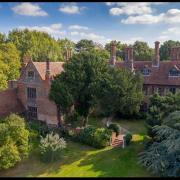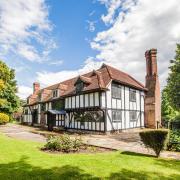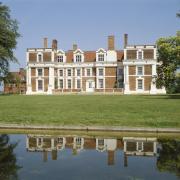Marking 100 years since a meteorite crash landed in the Essex countryside
In early March 1923, the vicar of Wendens Ambo, the Rev. Francis Berry, received a visit from one of his parishioners with a very unusual request. The visitor was a young man by the name of Frederick Pratt and he was clutching a rounded stone, which he claimed had fallen from the sky a few days before while he was working in a field near the village of Ashdon, in north west Essex. He wanted to know what it was and how this could possibly have happened. The stone turned out to be a meteorite. It is over 4.5 billion years old and thought to be a remnant of the primordial composition of the solar system before the planets formed.

Frederick explained to Berry that on Friday 9 March, he had been working on land south of Ashdon Church when, about 1pm, he heard a high-pitched sound overhead and immediately looked up, assuming it to be an aeroplane. He quickly realised that the sound was caused by a fast-moving projectile and the object hit the ground in a wheat field about 30 yards from him, causing the earth to ‘fly up like water’. Three days later, Frederick returned to the site and dug up the stone from a depth of about two feet.
After hearing this story, Berry purchased the stone from Frederick and donated it to the Natural History Museum in London where it was proved beyond doubt that it was a meteorite. Following the donation, the head of the Mineral Department at the museum, himself a leading expert on meteorites, met Frederick and Berry at the impact site. Frederick described what had happened that day and said that the stone was travelling south-west to north-east and must have passed over Saffron Walden. The story was covered in several newspapers including The Times.

The Ashdon meteorite is 12cm x 9cm x 6cm in size and weighed 1.27kg when donated. It has one large rounded surface with the opposite side irregular; the shape of the stone being the key to reconstructing its journey to Earth. On entering the atmosphere, the stone would have been travelling at over 12 km (8 miles) per second and frictional heating would have turned the stone into a bright fireball, which melted the surface. The solidified molten rock on the surface shows the lines of flow as conspicuous ridges and grooves.

The Ashdon meteorite now resides in the Natural History Museum’s collection in South Kensington. There are painted plaster casts of the meteorite on display in Saffron Walden Museum, Ashdon Village Museum and the Essex Field Club’s centre at Wat Tyler Country Park, Pitsea.
A booklet on the meteorite is in preparation and it is proposed to erect an oak post monument by the public footpath close to the impact site to be unveiled on the anniversary of the fall.




























